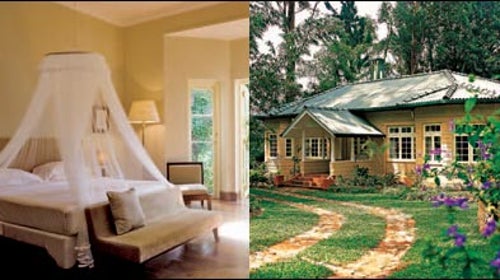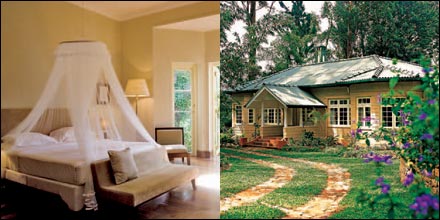MOST PEOPLE HAVE a fuzzy notion of Sri Lanka as an exotic island nation with beautiful beaches that had the bad luck to be in the tsunami zone. But with the January completion of the Ceylon Tea Trails, a collection of four swanked-out colonial-style bungalows on working tea estates in the country’s verdant south-central region, would-be travelers are now looking past the sand.
Steeped in ���ϳԹ���
Check out .After two decades of fighting, the long-awaited ceasefire in 2002 between Tamil rebels and the Sri Lankan government triggered a cautious wave of tourism to the southern part of the island, particularly to the coast. There are still periodic flare-ups of rebel-government conflicts in the northeast, so, as with any country experiencing political turmoil, you should check the U.S. State Department’s Web site () before making plans. But the Tea Trails area is considered safe for travelers, and since the 2004 tsunami it’s become Sri Lanka’s next hot adventure ground. “More than 20 years of civil war have kept the backcountry pristine,” says Peter Stewart, founder of Colombo-based ���ϳԹ��� Asia. “It’s almost like a time warp compared with other Asian countries.”
The Tea Trails bungalows, former residences of British tea-estate managers in the vicinity of 1,198-acre Castlereagh Reservoir, sit at an elevation of 4,000 feet near miles of hiking trails. Complete with teak floors and private gardens, each abode—Summerville, Castlereagh, Tientsin, and Norwood—has been thoughtfully renovated to include amenities like heated towel racks, beds with mosquito nets, fireplaces, personal butlers, and gourmet chefs. When not being pampered like royalty, you can witness the tea-making process from leaf to cup and sample various brews picked less than 14 hours earlier. When it’s time to amp it up, jump on a mountain bike to grind ribbons of singletrack, sea-kayak the reservoir, or hike through undulating emerald hills where local women handpick the prized “two leafs and bud.” Or rally for daylong outings like a trek through Horton Plains National Park, rafting the Class III Kelani River, where director David Lean filmed The Bridge on the River Kwai, or a sunrise climb of 7,360-foot Sri Pada (also known as Adam’s Peak), the country’s second-highest mountain. Back at your bungalow, cap it all off with evening sundowners, fresh-roasted cashews, and dishes like basil-pumpkin soup, New Zealand lamb loin, and a slew of Sri Lankan curries.
While the bungalows are open year-round, it’s best to avoid the summer monsoon months. To get to the Tea Trails, located near the mosquito-size town of Hatton, three hours east of Colombo, you can hire a car and driver through the resort. But we suggest you ride in style. SriLankan Airlines plans to begin seaplane charters from Colombo to Castlereagh Reservoir, transforming that scenic drive into a 30-minute puddle jump. Tea has never been sweeter.
Access & Resources
The Ceylon Tea Trails (011-94-11-230-3888, ) offers 20 rooms within the four bungalows. Doubles start at $165 per night, including meals and drinks. ���ϳԹ��� Asia (011-94-11-536-8468, ) handles all active outings for the Ceylon Tea Trails and specializes in custom itineraries throughout the country. Seaplane operator SriLankan Airlines plans to charge $150 for one-way flights from Colombo to Castlereagh Reservoir (011-94-19-733-5555, ).


